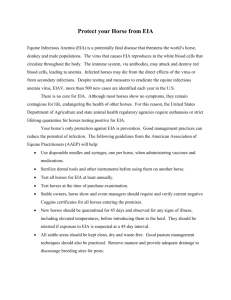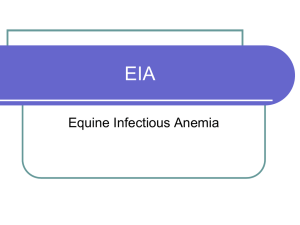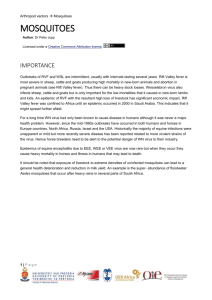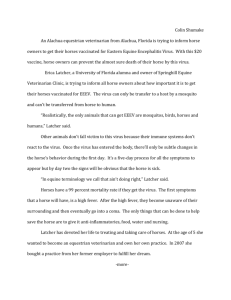Equine Infectious Anemia
advertisement
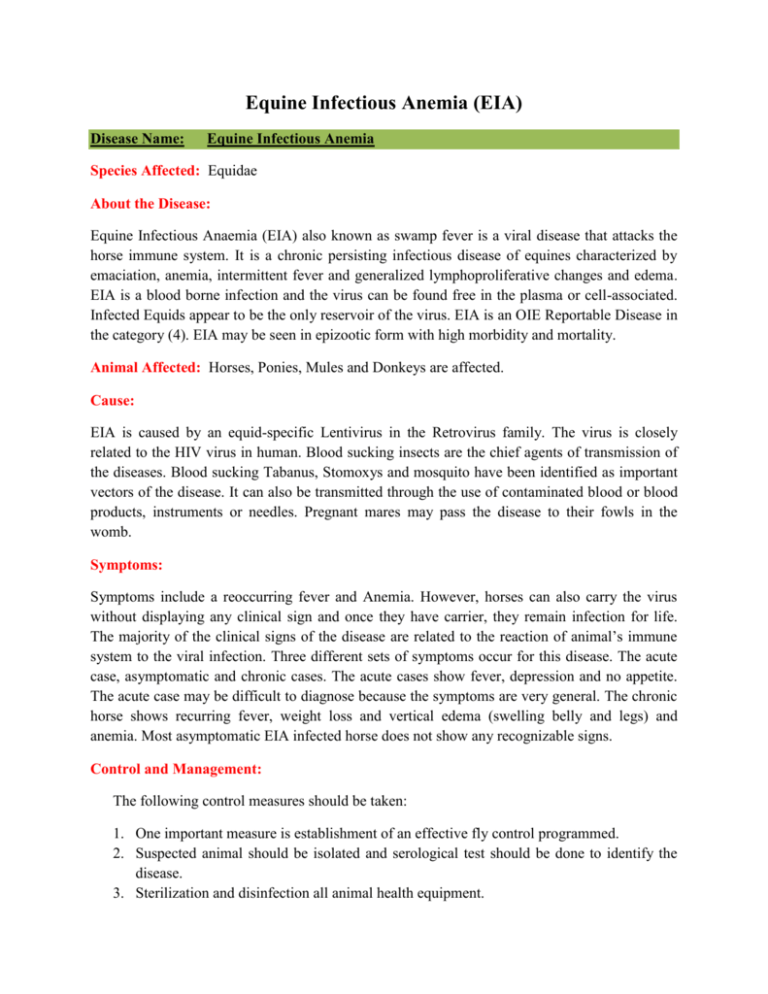
Equine Infectious Anemia (EIA) Disease Name: Equine Infectious Anemia Species Affected: Equidae About the Disease: Equine Infectious Anaemia (EIA) also known as swamp fever is a viral disease that attacks the horse immune system. It is a chronic persisting infectious disease of equines characterized by emaciation, anemia, intermittent fever and generalized lymphoproliferative changes and edema. EIA is a blood borne infection and the virus can be found free in the plasma or cell-associated. Infected Equids appear to be the only reservoir of the virus. EIA is an OIE Reportable Disease in the category (4). EIA may be seen in epizootic form with high morbidity and mortality. Animal Affected: Horses, Ponies, Mules and Donkeys are affected. Cause: EIA is caused by an equid-specific Lentivirus in the Retrovirus family. The virus is closely related to the HIV virus in human. Blood sucking insects are the chief agents of transmission of the diseases. Blood sucking Tabanus, Stomoxys and mosquito have been identified as important vectors of the disease. It can also be transmitted through the use of contaminated blood or blood products, instruments or needles. Pregnant mares may pass the disease to their fowls in the womb. Symptoms: Symptoms include a reoccurring fever and Anemia. However, horses can also carry the virus without displaying any clinical sign and once they have carrier, they remain infection for life. The majority of the clinical signs of the disease are related to the reaction of animal’s immune system to the viral infection. Three different sets of symptoms occur for this disease. The acute case, asymptomatic and chronic cases. The acute cases show fever, depression and no appetite. The acute case may be difficult to diagnose because the symptoms are very general. The chronic horse shows recurring fever, weight loss and vertical edema (swelling belly and legs) and anemia. Most asymptomatic EIA infected horse does not show any recognizable signs. Control and Management: The following control measures should be taken: 1. One important measure is establishment of an effective fly control programmed. 2. Suspected animal should be isolated and serological test should be done to identify the disease. 3. Sterilization and disinfection all animal health equipment. 4. 5. 6. 7. Control the vector population to be undertaken. Arrangement for strict quarantine of imported horse. Destruction of the horses, if found positive. Control program on serological testing of animal. Vaccines: There is no cure and no vaccine for this disease. Meteorological Occurrence: The disease is mostly prevalent in the low lying swampy areas. Courtesy:Dr. Peter N JRF, NADRS, Manipur. Disease Investigatory Laboratory Directorate of Veterinary, & A.H. Services, Manipur
